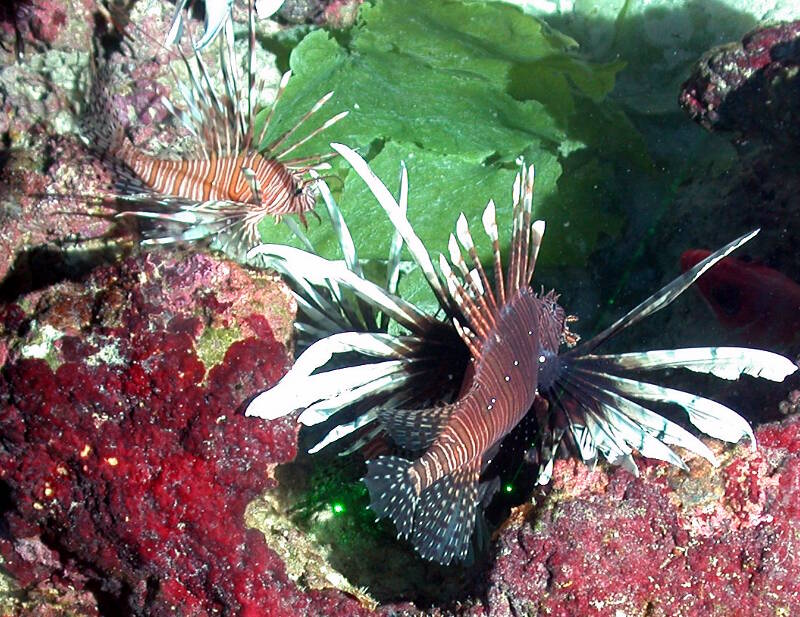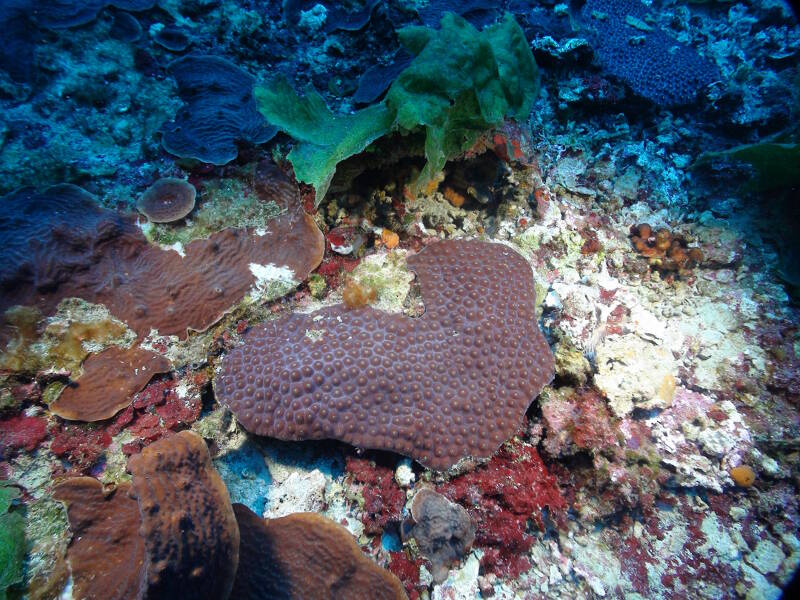
Joshua Voss, Assistant Research Professor - Harbor Branch Oceanographic Institute at Florida Atlantic University

Light traps are used to collect larvae for studies of potential connectivity among marine habitats. Image courtesy of the Coral Ecosystem Connectivity 2013 Expedition. Download larger version (jpg, 598 KB).
Each summer, corals release eggs and sperm in a marvelous coordinated spectacle that gives rise to countless new coral larvae. But do those offspring stay close to home, move to a nearby neighborhood, or perhaps even travel hundreds of miles before settling in a new reef location?
Many coral reef organisms have pelagic larval phases that can last for weeks to months in the open ocean. While some larvae are completely at the mercy of the prevailing currents, others have the ability to actively pursue the ideal new place to call home.
Understanding where these larvae ultimately settle, how they get there, and perhaps most importantly, where they’ve come from, are all critical for understanding dynamic marine ecosystems and developing broad-scale management strategies for effective coral reef conservation.
Pulley Ridge is a mesophotic coral reef hard bottom habitat along the West Florida Shelf. This designated Habitat Area of Particular Concern lies approximately 250 kilometers west of Cape Sable and northwest of the Florida Keys National Marine Sanctuary and the Tortugas Ecological Reserve. The potential influence of the Gulf of Mexico’s Loop Current and the relative proximity of these biologically important marine protected areas have given rise to a general hypothesis that Pulley Ridge may be providing larvae to habitats downstream in the Dry Tortugas and Florida Keys.
Therefore, the primary goals of our multiyear collaborative study are to not only enhance characterization and economic evaluation of these habitats, but also to determine how they may be connected in terms of both oceanography and biology. Maintaining connectivity among metapopulations (spatially separated populations of the same species) has been shown to enhance recovery following disturbance and to maintain genetic diversity. So by protecting multiple areas, it is possible that the entire regional system may benefit.

Connectivity is not always a good thing. Ecological connectivity can also bring new pathogens, diseases, or invasive species. For example, lionfish invasions in the Western Atlantic, Wider Caribbean, and Gulf of Mexico provide strong evidence for connectivity at regional scales. Image courtesy of the Coral Ecosystem Connectivity 2013 Expedition. Download larger version (jpg, 476 KB).
By combining detailed oceanographic current information with larval life history data of target species, predictive models can be developed to project how larvae may be moving through the systems. The timing of spawning and the oceanographic conditions can also have strong influences in survivorship and dispersal of larvae.
Ultimately, within metapopulations, some sites may consistently be sources of larvae while others are sinks where reproductive output never matches larval settlement rates.
Larvae are not the only intrepid travelers across vast coral reef habitat mosaics. Larger adult species, particularly economically-important fish such as snappers and groupers, may be traveling within and among Pulley Ridge, the Dry Tortugas, and the Florida Keys, so effective assessments of connectivity must look at both ends of an organism’s life span.
Although this study spans five years, our research team recognizes that ocean currents are variable and that populations wax and wane over time. As a result, examining the transits of larvae or adults may provide only a limited understanding of historical connectivity among regions. To empirically test for evidence of biological connectivity on evolutionary timescales, researchers are using genetic analyses to study the molecular ecology of key benthic and fish species.
A combination of high-throughput DNA sequencing techniques and genotyping studies provide data to determine population structure, dispersal, and gene flow. Sampling target species of fish, coral, sponges, and algae from Pulley Ridge and areas downstream allows us to reconstruct demographic histories of populations, infer phylogenetic relationships among taxa, and resolve contemporary patterns of dispersal.

Coral reefs are declining in many areas of the Wider Caribbean. Determining which coral populations reproduce effectively and help to sustain reefs nearby is critical for conserving coral ecosystems for the future. Image courtesy of Mike Echevarria, Florida Aquarium. Download larger version (jpg, 526 KB).
The combined efforts of our research team consisting of oceanographers, modelers, larval ecologists, fish biologists, coral ecologists, taxonomists, and molecular ecologists will be synthesized to provide critical data and decision support tools for resource managers. These data and tools in turn will help to inform management options and shape effective strategies to protect and conserve the spectacular marine resources in Pulley Ridge, the Dry Tortugas, and Florida Keys for decades to come.